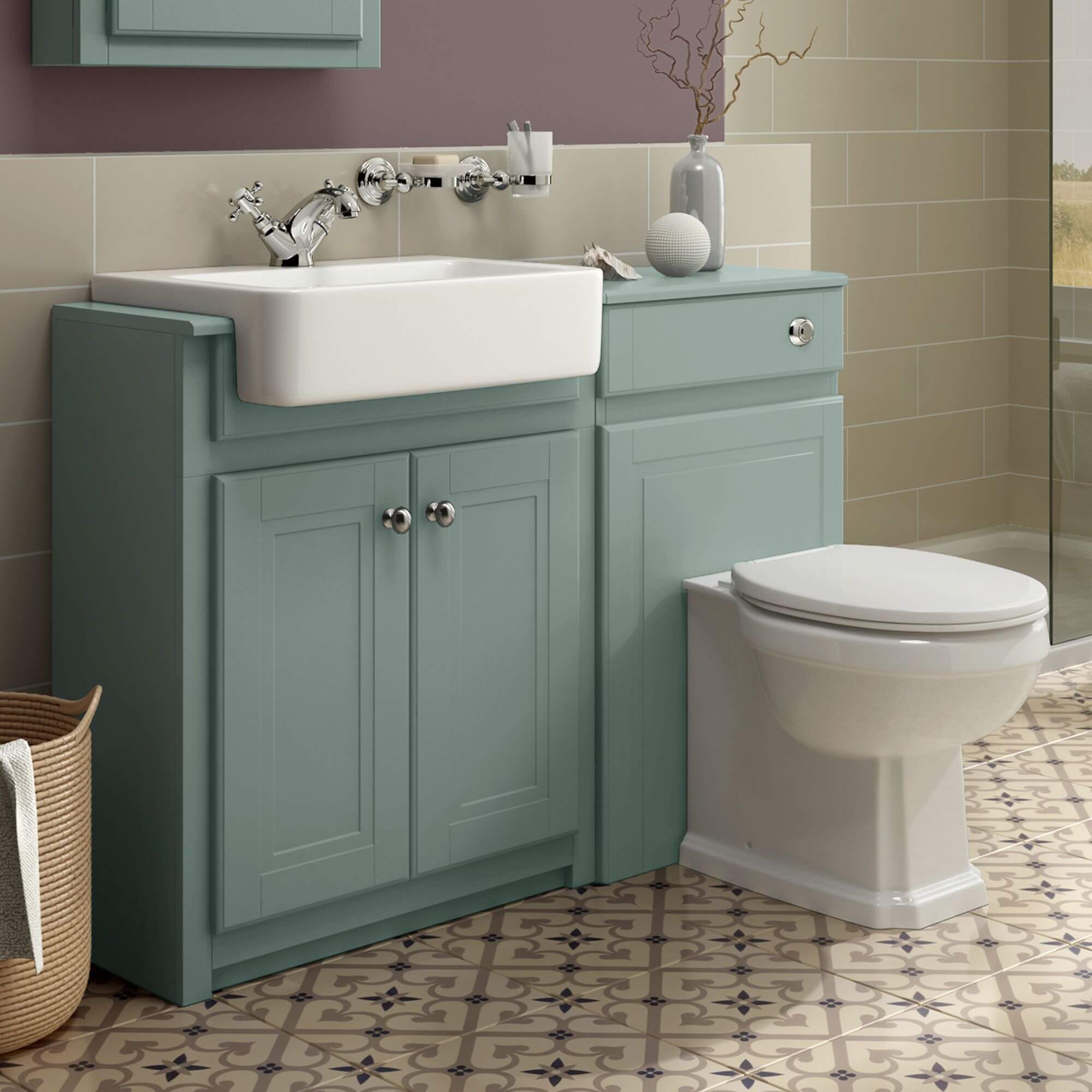Understanding Combination Vanity Units: Combination Vanity Units For Small Bathrooms

Combination vanity units are a popular choice for small bathrooms, offering a space-saving solution that combines style and functionality. These units integrate essential bathroom fixtures like the sink, countertop, cabinet, and mirror into a single, cohesive unit. By streamlining the design and maximizing vertical space, combination vanity units help create a sense of spaciousness in smaller bathrooms.
Components of a Combination Vanity Unit
Combination vanity units typically consist of the following components:
- Sink: The sink is the primary focal point of the vanity unit, serving as the basin for washing hands and face. Combination vanity units can feature various sink styles, including undermount, vessel, and drop-in sinks. The choice of sink style will depend on personal preference and the overall design aesthetic of the bathroom.
- Countertop: The countertop provides a surface for placing toiletries, grooming supplies, and other bathroom essentials. It is typically made from materials like granite, marble, quartz, or laminate. The countertop should complement the sink and cabinet, creating a cohesive and visually appealing look.
- Cabinet: The cabinet provides storage space for towels, toiletries, and other bathroom items. It can be designed with drawers, shelves, or a combination of both. The size and configuration of the cabinet will depend on the available space and the specific storage needs of the user.
- Mirror: The mirror is an essential component of any vanity unit, providing a reflective surface for grooming and personal care. Combination vanity units often feature integrated mirrors, which can be framed or frameless, depending on the design aesthetic.
Types of Combination Vanity Units
Different types of combination vanity units cater to various bathroom layouts and design preferences:
- Single Sink Vanity Units: These units are suitable for smaller bathrooms or powder rooms, providing a single sink and limited storage space. They are ideal for individuals or couples who do not require extensive storage.
- Double Sink Vanity Units: Double sink vanity units offer greater convenience for families or couples, providing two sinks and ample storage space. They are typically larger than single sink units and are best suited for bathrooms with sufficient space.
- Corner Vanity Units: Corner vanity units are designed to fit into tight spaces, maximizing the use of available corner areas. They are perfect for small bathrooms with limited wall space.
- Wall-Mounted Vanity Units: Wall-mounted vanity units offer a contemporary and minimalist aesthetic, giving the illusion of more space by minimizing the visual footprint. They are also ideal for small bathrooms as they do not require floor space for legs or base cabinets.
Space-Saving Features and Design Considerations

Combination vanity units are designed to maximize space in small bathrooms, offering a blend of functionality and style. These units cleverly integrate storage solutions with the vanity itself, making the most of every inch.
Compact Dimensions
Compact dimensions are crucial for maximizing space in small bathrooms. Combination vanity units are often designed with smaller footprints compared to traditional vanities, allowing for more open floor space.
Built-in Storage
Combination vanity units excel in maximizing storage space. These units feature built-in cabinets, drawers, and shelves, offering a convenient and organized way to store bathroom essentials.
Combination vanity units are particularly beneficial in small bathrooms, where space is at a premium.
Vertical Storage Solutions
Vertical storage solutions are essential for maximizing space in small bathrooms. Combination vanity units often incorporate tall cabinets or shelves, allowing for efficient storage of towels, toiletries, and other bathroom items.
Bathroom Layout Considerations, Combination vanity units for small bathrooms
When choosing a combination vanity unit, it is essential to consider the overall bathroom layout and available space. The unit should be sized appropriately to fit the designated area, allowing for comfortable movement and access.
Popular Styles and Materials
Combination vanity units are available in a wide range of styles and materials, offering flexibility to match any bathroom aesthetic and budget. Understanding the different options can help you choose the perfect vanity for your space.
Combination Vanity Unit Styles
The style of your combination vanity unit will significantly influence the overall look of your bathroom. Consider these popular styles:
- Modern: Modern vanity units typically feature clean lines, minimalist designs, and sleek finishes. They often incorporate materials like chrome, stainless steel, and glass. Examples include vanities with geometric shapes, floating shelves, and integrated lighting.
- Contemporary: Contemporary vanities share similarities with modern styles but may incorporate bolder elements like wood grains, textured surfaces, and geometric patterns. They often feature open shelving and a focus on functionality.
- Traditional: Traditional vanity units are characterized by ornate details, classic designs, and timeless materials. They often feature raised panels, decorative hardware, and warm wood finishes. Examples include vanities with intricate carvings, clawfoot sinks, and antique-style faucets.
- Farmhouse: Farmhouse vanities embrace a rustic and cozy aesthetic. They often feature distressed wood finishes, exposed beams, and natural materials like stone or metal. Examples include vanities with reclaimed wood, farmhouse sinks, and industrial-style hardware.
Materials Used in Combination Vanity Units
The material of your combination vanity unit will impact its durability, aesthetics, and price. Here’s a breakdown of popular materials and their pros and cons:
| Style | Material | Pros | Cons |
|---|---|---|---|
| Modern, Contemporary, Traditional, Farmhouse | Wood | Durable, versatile, natural beauty, warm aesthetic | Can be expensive, susceptible to moisture damage if not properly sealed, requires regular maintenance |
| Modern, Contemporary | Laminate | Affordable, durable, water-resistant, available in various colors and patterns | Can be less aesthetically pleasing than natural materials, may show scratches or wear over time |
| Modern, Contemporary | Acrylic | Lightweight, easy to clean, water-resistant, available in various colors and finishes | Can be less durable than other materials, prone to scratches, may not have the same natural appeal as wood |
| Modern, Contemporary, Traditional | Stone | Elegant, durable, natural beauty, heat-resistant | Expensive, heavy, requires specialized installation, prone to staining |
